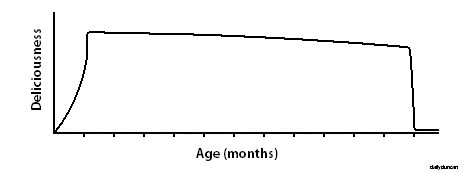With a consumer economy that fosters a rampant appetite for new and exciting superficial experiences, it’s not surprising that some of the products appearing on our shelves seem excessive or odd. Found among them: a myriad of synthetically flavored food products.
Synthetic (or artificial) flavoring is the process of simulating a flavor rather than relying on the ingredient(s) from which the flavor is originally derived. This allows us to experience a virtually infinite combination of textures and flavors. An example of this would be orange soda, which contains no oranges, yet tastes, to a limited extent, like an orange.
Artificial flavoring should not be confused with natural flavoring, in which a flavor is added by the introduction of authentic ingredients. An example of this would be chocolate milk, which acquires its chocolaty flavor directly from the chocolate contained therein. Most would agree that synthetic flavoring is the inferior method, but natural flavoring is more restrictive due to the fact that natural ingredients are expensive, don’t always fuse together properly, and may have an undesirable texture. Though artificially flavored food is often lacking in nutrition, there is an even worse process – one which produces items that border on inedibility.
Tertiary flavoring uses existing, recognized food products, not ingredients, as the basis for the creation of flavor. Basically, this means that food is being flavored to imitate other food, instead of a single flavor. Examples of tertiary flavoring include cheeseburger-flavored potato chips, cinnamon bun-flavored ice cream and pizza-flavored salad dressing. However, contrary to what the product’s title implies, pizza is not a flavor.
The term flavor carries a connotation that suggests a raw, elemental state as well as a distinct identity. Although pizza does produce a unique and memorable sensation when in the mouth, what we’re actually experiencing is the combined flavor of a variety of different ingredients, including cheese, tomato sauce and fingernails. To better illustrate tertiary flavoring, let’s take a closer look at the origin of cinnamon bun-flavored ice cream.
cinnamon (flavor) + bun (food) = cinnamon bun (flavored food)
cinnamon bun (flavored food) + ice cream (food) = cinnamon bun-flavored ice cream (food-flavored food)
The idea of food-flavored food is obviously ridiculous. Flavors are colors, not pictures – attributes, not objects. To make things worse, food-flavored food is almost always flavored synthetically, since, as mentioned earlier, it can be costly and difficult to add food to food.
On top of that, everyone knows that food is made of ingredients, not food. If we looked at the back of a bag of birthday cake mix, we would hope that the ingredient list wouldn’t just say “birthday cake.” Birthday cake tastes like birthday cake because it contains the ingredients that come together to form that particular flavor, not because it contains birthday cake. Likewise, if we looked up a recipe for fettuccine Alfredo, we would expect a detailed list of steps and ingredients to help us create the dish, not “acquire fettuccine Alfredo.”
Some claim that pizza and cinnamon bun are legitimate flavors because they are uniquely recognizable, but if we accept this line of thinking, then cinnamon bun-flavored ice cream is also a flavor. And if that’s the case, then one day we could see cinnamon bun-flavored ice cream flavored coffee, or worse.
Don’t buy food-flavored food.

